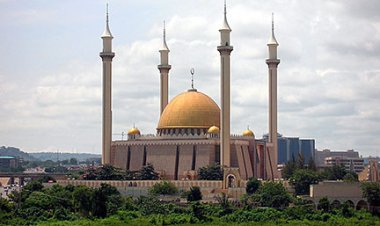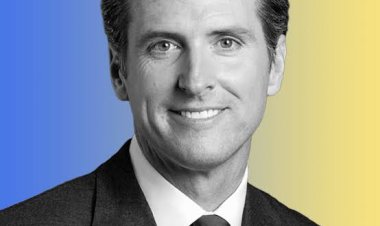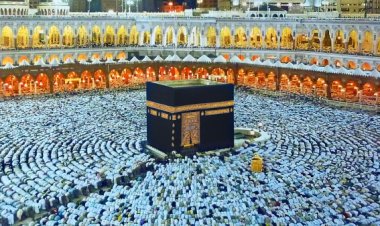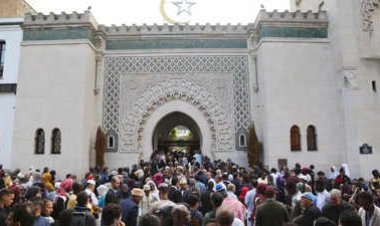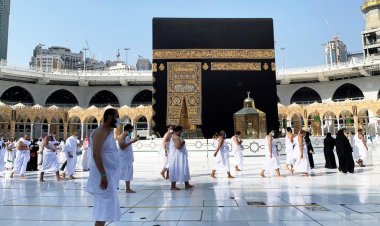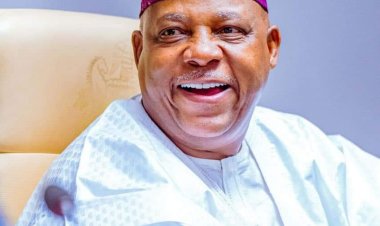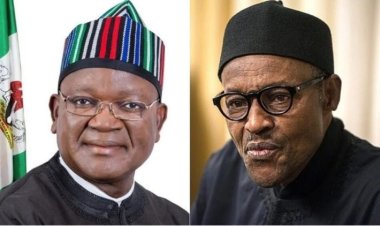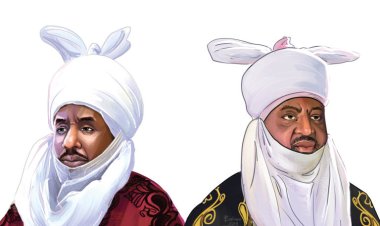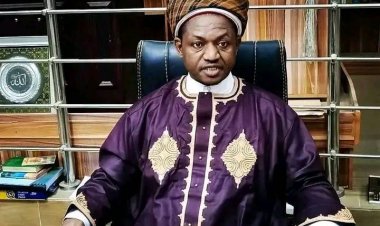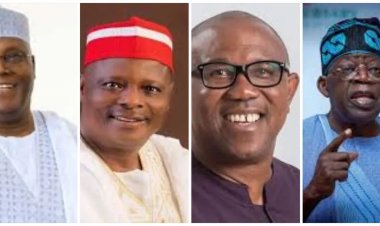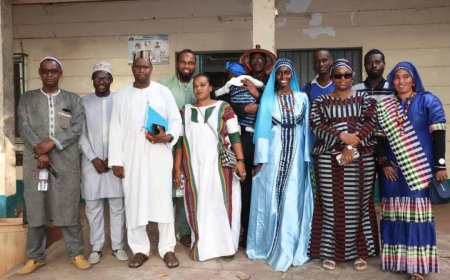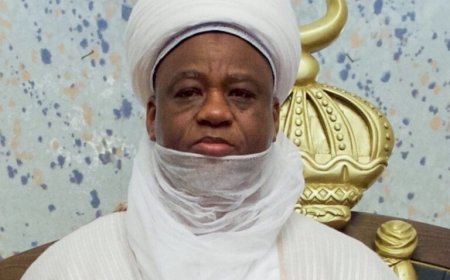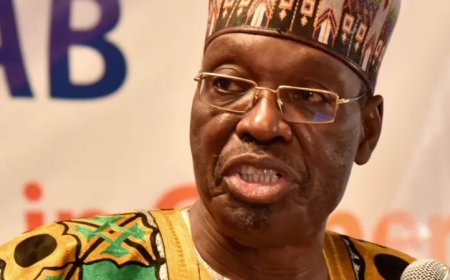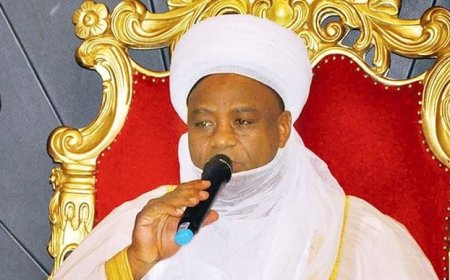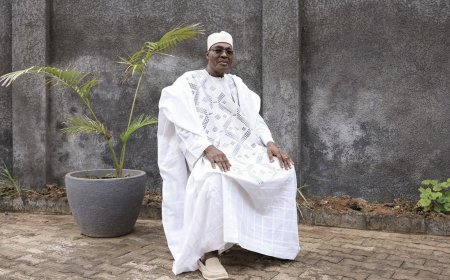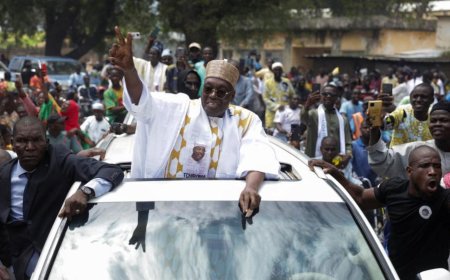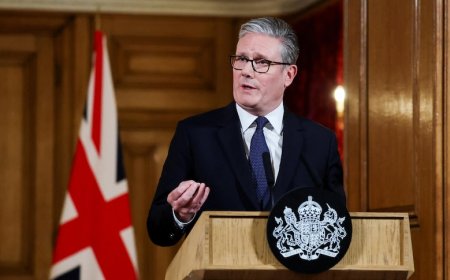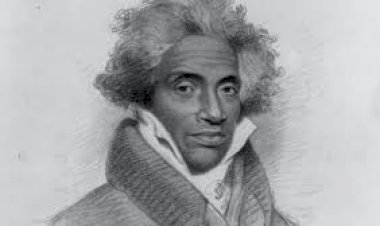THE ORIGIN OF THE TURUDBE` FULANI PART 2
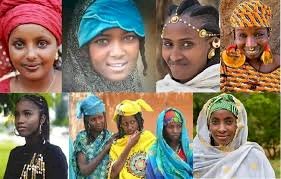
“When the Most High divided to the nations their inheritance, when He separated the sons of Adam, he set the bounds of the people according to the number of the children of Isra’il ”1
by Shaykh Muhammad Shareef bin Farid
It is appropriate here to mention what the Turudbe’ say about themselves, despite the fact that many of the ethnic groups among the Sudanic peoples customarily give fabricated lineages to establish ‘nobility’ of origin for its people.
The significance of examining the Turudbe’ Fulbe’s view of themselves is to analyze how they construct their identity and how they employ that identity construct for their own survival. Their Self Knowledge helps them to return to the idealization of their cultural values, myths and heroes in order to uphold and reaffirm their collective personality.2
Waziri Junayd ibn Muhammad al-Bukhari, drawing from earlier sources of the origin of the Fulbe’, combines them into a synthesis of opinion. He said regarding their origin:
“It is said that the origin of the Turudbe’ are from the Jews. It is said that they are from the Christians. It is said that they are from the Bambara from among the Sudanese who came and settled between the Nile and Euphrates rivers.
It is said that they are from a band of the Banu Israel who relocated from the region of Sinai to the lands of Tuur. It is for this reason they are called Turudbe’. Tuur is a land in the western part of Yemen. The most sound opinion is that they are the descendents of Ruum ibn `Esau ibn Is’haq ibn Ibrahim, (upon them be peace). They settled near the meeting of the two seas.”3
Though some contemporary scholars dispute the above account, yet John Willis points out “this need not be taken as a fatal objection to their claims of Arabic ancestry” or even for that matter Hebrew ancestry, as well.4 Here in this context, the Turudbe’ trace their lineage and origins back through the two sacred communities the Jews and the Christians and then on to the sacred covenant of Abraham, the father of the People of the Book.
This is significant because the narrative of the ‘covenant’, the ‘promise’ and the ‘return’ becomes a motivating factor in the self-image of the Turudbe’. This identity construct becomes what Ibn Khaldun would call the point of solidarity (asabiyya) that binds the Turudbe’ and provides them with a philosophy in their historical consciousness. It gives them their reason for being and what Nietzsche would call ‘the will to power’.
Abdullahi Dan Fuduye’ places Turudbe’ genesis deep within the ethos of the Bani Israel when he said:
“The origin of the entire Fullaatiyeen (Fulbe’) ethnicity comes from the geographical area of Mount Sinai (Tuur Sina). They thereafter persisted in migrating from place to place until they reached the lands of the far west (aqsa’l-maghrib) and to the lands that Allah ta`ala had willed for them to reach.”5
This positing of the Turudbe’ in the sacred mount where the Torah was originally revealed to Prophet Musa (Moses) provides them with the mechanism for organizing their collective experience around the Creator and infuses them with divine purpose and destiny.
This self-image will be played out repeatedly throughout the long history of the Turudbe’ in every region of Africa where they settled. This concept will reemerge again among the enslaved descendants of the Turudbe’ in the Americas as well.
Building on the Abrahamic line signification, Abdullahi Dan Fuduye’ traces the Turudbe’ to ar-Ruum who was a descendent of both Is’haq and Isma`il, the two sons of Abraham, consequently, assuring for his ethnicity a complete fulfillment of the ‘covenant’ given by the Creator to Abraham. Abdullahi says:
“You also know that this ar-Ruum is the son of `Esau ibn Is’haq ibn Ibrahim, upon them be peace. His mother was Nasmat the daughter of Isma’il ibn Ibrahim, upon him be peace.
Dhu’n-Nasibeen said in his Kitab’t-Tanweer:
“Isma`il fathered twelve boys and one girl and it was from his descendents that all the Arabs descended. When death approached he bequeathed to his brother, Is’haq, that his son, `Esau should be married to his daughter, and from their marriage ar-Ruum was born. Ar-Ruum was yellowish in color for which reason his children were called the Banu al-Asfar.”6
It is interesting to note that the Turudbe’ trace their lineage to two sons whose birthright have been in question. One being Isma’il, the first born son of Abraham and the African/Nubian woman, Hajar; and the other was ‘Esau, the grandson of Abraham through his second born son, Is’haq. According to the Bible, `Esau, the first born of Is`haq, first had his birthright taken by his younger brother, Jacob.7
Then through the deception their mother, Jacob was able to attain the blessings that was destined for `Esau.8
Isma’il was the first born of Ibrahim, yet Is’haq is said by the Jews to have received the ‘covenant of blessing’ from his father. Isma’il, on the other hand was overlooked and treated like an unwanted and rejected son. This is significant, because it lays the foundation for two other identity-constructs: that of the ‘lost tribe’ and ‘the rejected stone’.
The Lost Tribe referent is a key element in the identity construct for the Bani Israel because it opens the hope of future redemption and affirmation after rejection and spiritual fall of the scattered tribes. The referent of the Rejected Stone takes its origin from a people who were despised and discarded due to some outward or inward imperfection, yet the Creator ‘chose’ them, redeemed them and made them the Corner Stone of a ‘New Spiritual World”.
This signification will be seen throughout history of the Turudbe, especially in the Diaspora of the Americas. This self-image laid the foundation for the individual and collective quest for authenticity among the Turudbe’, giving them a common historical experience that provided them with a frame of reference that was stable and continuous.9
There is discrepancy regarding the above-mentioned ar-Ruum descendent of `Esau. Was ar-Ruum his real name or an honorific title? In the an-Nasab wa’s-Sahr another name is given for the son of `Esau ibn Is’haq, which raises the question of authenticity. The text says:
“It is said regarding the lineage of the Fulaani in the Hassan’l-Muhaadira of as-Suyuti: “They are traced back to `Imraan ibn Fulaan ibn al-`Esau ibn Is’haq.” It says in the Taaj’l-`Uruus: “Their origin is from the Tukruur, a nation from the Blacks in the lands of the far west. This was narrated by as-Safaani, although our teacher denies this.”10
Was this Fulaan the same as ar-Ruum? If so, then the discrepancy is removed. The name Fulaan in Arabic means ‘so-and-so’ like when you want to obscure a particular person’s name you say for example: ra’aytu fulaanan (“I saw so-and-so.”). Did the above chronicler designate ar-Ruum as Fulaan (so-and-so) because he did not know his real name? Or was Fulaan his real name and ar-Ruum an honorific title, like for example Fulaan ar-Ruum? If the name ar-Ruum was an Arabization of the biblical name Reuel mentioned as the son of `Esau in Genesis, then it would explain the connection of this family with Musa (Moses) and Mount Sinai.
Having posited their historical consciousness in ancient history within the fountainhead of the Abrahamic line, the Turudbe’ went a little further to give themselves legitimacy within the Islamic ethos as well. According to the Nasab ‘l-Falaata (the Lineage of the Fulbe’) authenticity for the Turudbe’ Fulbe’ identity was given on the tongue of the Prophet of Islam, Muhammad, may Allah bless him and grant him peace. This text says:
“The Messenger of Allah may Allah bless him and grant him peace once said: “Honor them for they are believers after whom Allah will show mercy to on the Day of Judgment.” Umar ibn al-Khataab may Allah be pleased with him said: “Who are they O Messenger of Allah?” He said: “They are the al-Fulaat those who will establish the prayer at every time and give the alms in everything.”
Abu Bakr as-Siddiq may Allah be pleased with him said:
“What will be their marks O Messenger of Allah?”
He said: “Their mark will be that they will wear white turbans. Their language will be similar to the Arabic language. They will call a book difteer. They will call the gazelle lalwah. They will call a stick sawru. They will call water diyam. They will call sandals fadiy. They will call glorification of Allah tasbirghul. They will perform what they are ordered. Most of them will believe in Allah and His messenger. They will not disobey Allah in what they are ordered and will perform exactly what they are ordered. They will name the cow neggi… They will call millet muhri. They will call the long shirt limsiri they will call the lower wrap sarla. Some of them will recite the Qur’an while others of them will not. Their original tongue was of Adnaani origin. The ignorant ones among them will be just like the scholars among them in worship of Allah. They will worship at all times believe in Allah and His messenger and the Last Day. They will listen carefully to the words of Allah and adhere to His worship.”
Umar may Allah be pleased with him then said: “What is their origin O Messenger of Allah?” He said: “They will be from the descendents of `Uqba ibn Yaasir ibn `Aamir ibn Mu`adh ibn Magheesh ibn Salim ibn Sa`eed ibn Mura.”11
Here a clear description of the inner spiritual character, outer attire and Arabic origin of the Turudbe’ are given, which distinguishes them from other ethnicities. The wearing of the white turban has been a mark of honor for its scholars and later became a social custom that had political significance especially during the 18th century jihads in the central Bilad’s-Sudan.
Dr. Joseph Adjaye underscores the “communicative capacity of clothing as a highly visible instrument in the expression of cultural identity.”12 Clothing and outward attire distinguishes a people and allows them to project their identity to the rest of the world.
The alleged description given of the Turudbe’ by Prophet Muhammad, may Allah bless him and grant him peace, affords them the legitimacy and authenticity essential for collective solidarity and political sovereignty. According to the Nasab ‘l-Falaata, the Turudbe’ embraced Islam completely and scholarship spread among them.
According to the above Arabic sources, there is incongruity regarding the personage of `Uqba ibn Nafi`.13
The above mentioned source names the ancestor of the Turudbe’ as `Uqba ibn Yaasir ibn `Aamir ibn Mu`adh ibn Magheesh ibn Salim ibn Sa`eed ibn Mura. In the Dabt’l-Multaqataat of Waziri Junayd, he cites `Uqba ibn Nafi` as being the common ancestor of the Turudbe’.
One of my Turudbe’ teachers in the Republic of the Sudan, Bashir ibn Ahmad ibn Modi Abdu in his an-Nasab wa ‘s-Sahr attempted to clarify this discrepancy in the following story when he related the story of the Turudbe’ encounter with the armies of the Companions of Muhammad:
“The Turudbe’ said to them: ‘We have recognized the Truth and we will adhere to it.’ Then the armies of the Companions waged war against the Sironkulle’ and when they intended to depart, the leader of the Turudbe’ said: ‘You came to us with the religion, while we were ignorant. Therefore leave with us someone who can teach us.’ They then left behind `Uqba ibn `Aamir. Some say it was `Uqba ibn Nafi`, which is the correct view. He settled with them and taught them the religion and the divine law (shari`a). Then the leader of the Turudbe’ married his daughter, Bajjemanga to `Uqba.”14
Junayd cites that the Turudbe’ migrated to the west until they reached the lands of Futa Toro. He further explains that when `Uqba ibn Nafi` led the armies of the Companions of Muhammad across North Africa in 675 C.D. during `Amr ibn al-`Aas’s rule of Egypt.15 He established the great learning center of Qayrawan. He then moved southward to Ghadames, the lands of the Berber, the Suus al-Aqsa, Widaan and from there he led his armies as for as the frontiers of the Sudan, where he encountered the people of Takruur.16
According to Waziri Junayd:
“The Amir (leader) of the Turudbe’ married his daughter, whose name was Bajimanga, to `Uqba ibn Nafi` and she soon gave birth to four sons: Da`atu, Naasa, Waya, and Wa`araba.”17
Here Waziri Junayd demonstrates that the emergence of the Turudbe’ were from among the Fulbe’ people because of a merger with the Arabs. He implies that their descent from `Uqba ibn Nafi` gave them their militant Islamic outlook and made them more sedentary than the rest of the Fulbe’.
The Turudbe’ were known for not herding cattle as is the custom of the remainder of the Fulbe’ and for taking up the profession of Islam, similar to the Zawaya clerical groups among the Tuareg and Berber. It is not surprising that both the Zawaya and the Turudbe’ claim descent from `Uqba ibn Nafi` and that both ethnic groups initially acted as clients to more militant ethnic groups around them.18
Finally, Shaykh Bashir ibn Ahmad gives a summary of the identity construct of the Turudbe’ Fulbe’ people, when he said:
“The Fulaaniyun as we said previously are Arabs from the direction of their ancestor, Uqba. The Arabs are originally from Isma`il ibn Ibrahim. From the direction of their paternal uncles, the Turuuudiya are from Ruum ibn Esau ibn Is’haq ibn Ibrahim and from the direction of Nasma, the mother of Ruum. She too is from Isma`il ibn Ibrahim, upon him and our Prophet be blessings and peace.”19
The identity construct of the Turudbe’ Fulbe’, thus arrives at its origin, where they descend from the sacred line of Abraham, from his two sons, Isma`il and Is’haq. The Turudbe’ further amalgamated their line back into the line of the source house of Isma`il, to whom the last Messenger and Prophet, would be sent, the House of Quraysh. This assured them the right to self-rule and independence and the right of autonomous leadership among the Muslims.
This is true because of two Prophetic traditions narrated in Saheeh Muslim that deals with this subject. The first one was related from Jabir ibn Samr, who said:
“My father and I once visited the Prophet when we heard him say, ‘This affair (i.e. the glory of the religion and rectifying the condition of the Muslims) will not cease until there has come twelve Caliphs.’ He then said something that I did not hear. I asked my father what he said. He replied, ‘He said all of them will be from the Quraysh’.”20
The second tradition is similar, except now the 12 Caliphs are connected to governance (wilayat). It was also related by Jabir ibn Samr, that he heard the Prophet say on the Friday evening that al-Aslami was stoned:
“The religion will continue firm and unflinching until the coming of the Hour, or until there is appointed over you twelve Caliphs. Each of them will be from the Quraysh.”21
These two prophetic traditions indicate that the Turudbe’ Fulbe’ held to the view that all the promises and fulfillment of prophesies regarding the “seed of Abraham”, would be realized in them. The sojourn of the Bani Isra`il in bondage in Egypt was only one aspect of the fulfillment of Divine prophecy.
In order for the prophecy to be truly fulfilled all of the “seed of Abraham” would of necessity have to go through the same purifying fire of exile, bondage and oppression. They would remain in this condition until the return of the Messiah of the house of Abraham who said: “I am not sent but unto the lost sheep of the house of Isra`il.”22
What is clear from the above is that the Turudbe` Fulbe` nation found their origins from Abraham through his sons: Isma`il and Is’haq and indeed were the ‘People of the Covenant’ which was given to Abraham.
But more importantly, is that unlike the ancient Bani Isra`il and the present European pretenders to this ‘covenant’, the present ‘jewish’ ethnicities in America, Europe and those who control the western outpost in Palestine – ‘Israel’; the Turudbe` did not develop a racist or exclusivist identity construct of being ‘chosen’ in the sense of an ‘Oberman’, or ‘super race’ theory.
This race superiority is a particular trait of the Aryans of the sub-continent of India, their ancestors in Europe and that ‘peculiar’ group of European Khazar tribes who accepted ‘judaism’ in the 9th century C.E. who have been the cause social problems and upheavals internationally ever since.
Nor did the Turudbe` follow what happened with the ‘chosen’ ethnicities among the Quraysh and the Ansar, who after three generations of adhering to the covenant to spread Islam to the world, later morphed into the ‘Arab nationalism’, ‘bathism’ or ‘ethnocentric’ strains of shiism that has also caused as much social upheavals internationally so apparent in our news today.
And where this ‘exclusivist’ trend did emerge among the Fulbe`, the result always ended in the utter humiliation of its people, the subjugation by and marginalization from the societies in which they lived. The ‘oberman’ or ‘super race’ concept among the Fulbe` appeared under the guise of ‘pulaaku’ (elite fulbe-ness). Reisman described the meaning of ‘pulaaku’ to be the superiority appropriate to a Fulbe`.23
While my friend Dr. Al-Amin Abu Manga of Maiurno describes ‘pulaaku’ with a more affirmative meaning by asserting that it is the foundation of being Fulbe`.24 In my opinion, it is exactly this attitude which led to the subjugation of the Fulbe` nations throughout Africa.
To define virtue and benevolence to ‘pulaaku’ and disconnect it from its Islamic origins is absurd and destroys the ‘covenant’ given to the Fulbe` from their ancestor Abraham. Indeed it is this attitude of ‘pulaaku’ which the Shehu and his colleagues condemned among the Fulbe` in the same manner in which the Prophet, may Allah bless him and grant him peace eradicated the ‘elitism’ of Arab supremacy during his time.
Supremacy and preeminence was defined by spiritual attainments as defined in the Quran and Sunna, and racial or ethnic supremacy defined by ‘pulaaku’ was the cause of the destruction and subjugation of the Fulbe` throughout their long history in Africa, and indeed in the Diaspora of the western hemisphere.
It was only when the Turudbe` amalgamated themselves and intermixed on the basis of religious association with other ethnicities did they attain social ascendancy and were able to fulfill the ‘Devine Covenant’ and become a Blessing to nations in which they lived.
FOOTNOTES
1. Bible – Deuteronomy 32:8
2. Joseph K. Adjaye, , “Kwame Nkrumah and the Legacy of African Identity”, unpublished paper, pp. 6-7.
3. Here reference is made to the southern Arabian peninsular where the Red sea and the Indian Ocean converge. This would place them around the ancient Arab lands of Tuur. [See Waziri Junayd ibn Muhammad al-Bukhari, Dabt’l-Multaqataat, f. 3.] According to the Bible in Genesis 36: 10 the name of this son was Reu`el who was the son of Bash`emath the daughter of Ishma`il. However in Genesis 28: 9 the name of this daughter of Ishma`il that `Esau took as his wife was Ma`halath. In 1 Chronicles 1: 35 Reu`el had four sons: Nahath, Zerah, Shammah, and Mizzah. Allegedly, it is from one of these sons that the Turudbe’ Fulbe’ descended.
4. John Willis, Studies in West African Islamic History, p. 23.
5. Abdullahi Dan Fodio, Aslu ‘l-Falaatiyeen, unpublished manuscript in the possession of the author, f. 2.
6. Abdullahi Dan Fodio, Kitaab an-Nasab, unpublished manuscript in possession of author, ff. 1-2.
7. King James Version Bible, Genesis, 25: 29-34.
8. Ibid, Genesis, 27: 30-40.
9. Joseph K. Adjaye, p. 15.
10. Bashir ibn Ahmad ibn Modi Abdu ibn Bellel, An-Nasab wa ‘s-Sahr,, unpublished manuscript in possession of author, f. 4.
11. Nasab ‘l-Falaata, athor unknown, unpublished manuscript in possession of author, folios, unpublished manuscript in possession of author, ff. 3-5.
12. Joseph K. Adjaye, p.9.
13. According to Bashir ibn Ahmad, ff. 12-13, “`Uqba ibn Nafi` was the son of Abd’l-Qays ibn Laqeet ibn `Aamir ibn Umayya ibn at-Tarab ibn Umayya ibn al-Harith ibn Fihr. He was among the Quraysh.”
14. Bashir ibn Ahmad, ff. 6-7.
15. Ibid. f. 10.
16. Ibid. f. 13.
17. Waziri Juanyd, Dabt’l-Multaqataat, f. 7.
18. John Willis, Studies in West African Islamic History, pp. 3-13.
19. Bashir ibn Ahmad, f. 12.
20. Muslim ibn Al-Hajjaj al-Nisaburi, as-Sahih, (Isa al-Babi al-Halbi Publishers, Cairo), 1962, Vol.2. p.121.
21. Ibid., pp.121-122.
22. Bible, Mathew – 15:24. King James Version.
23. Paul Reisman, Freedom in Fulani Social Life: An Introspective Ethnography, (Chicago and London: the University of Chicago Press, 1988) p. 127-128.
24. Leger & Mohammad, Rudolf Leger & Abubakar B. Mohammad, “The Concept of Pulaaku Mirrored in Fulfulde Proverbs of the Gombe Dialect”, Berichte des Sonderforschungsbereichs, 268, Band 14, (Frankfurt, 2000), p. 302.
SOURCE:
The Lost & Found Children of Abraham in Africa & the American Diaspora: by Shaykh Muhammad Shareef bin Farid
https://www.academia.edu/8092379/The_Lost_and_Found_Children_of_Abraham_In_Africa_and_the_American_Diaspora








